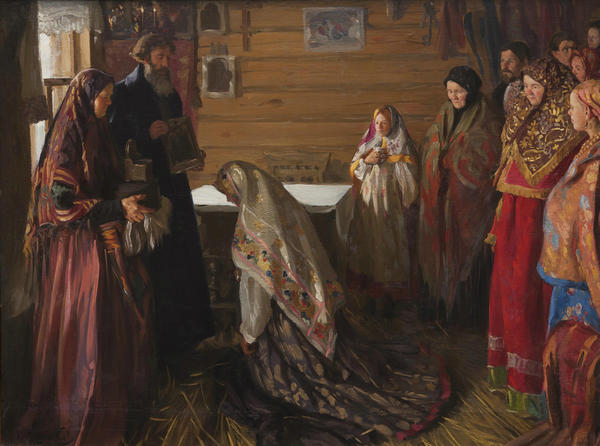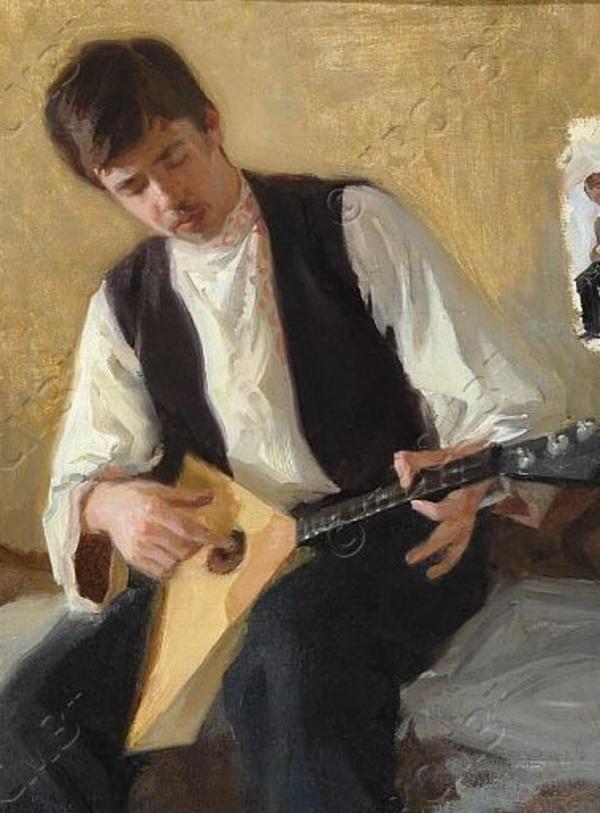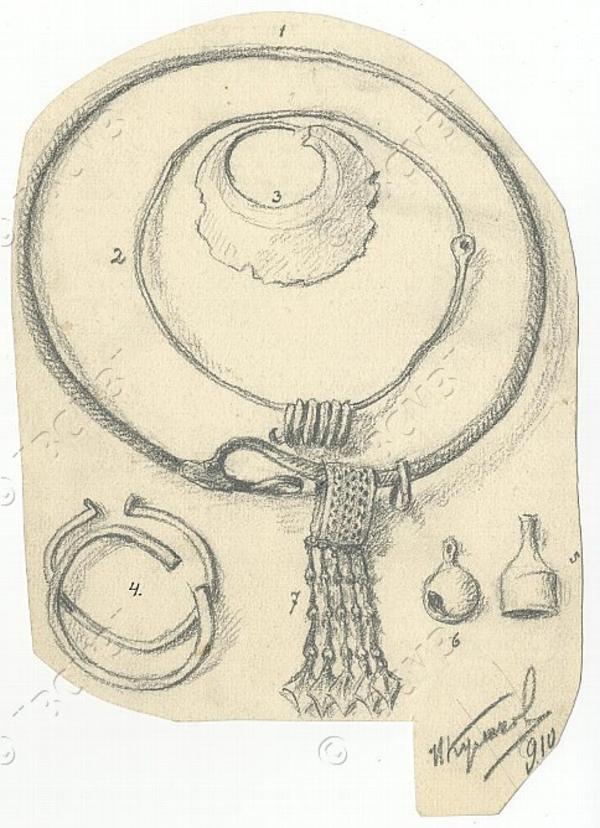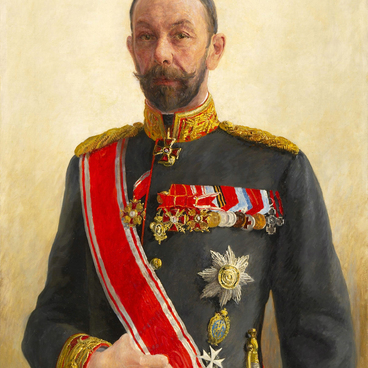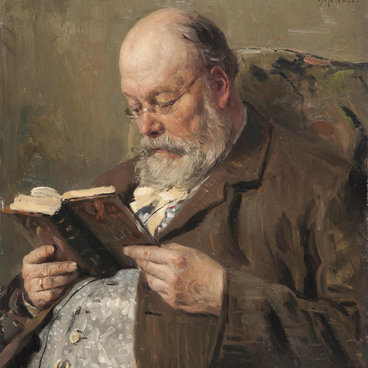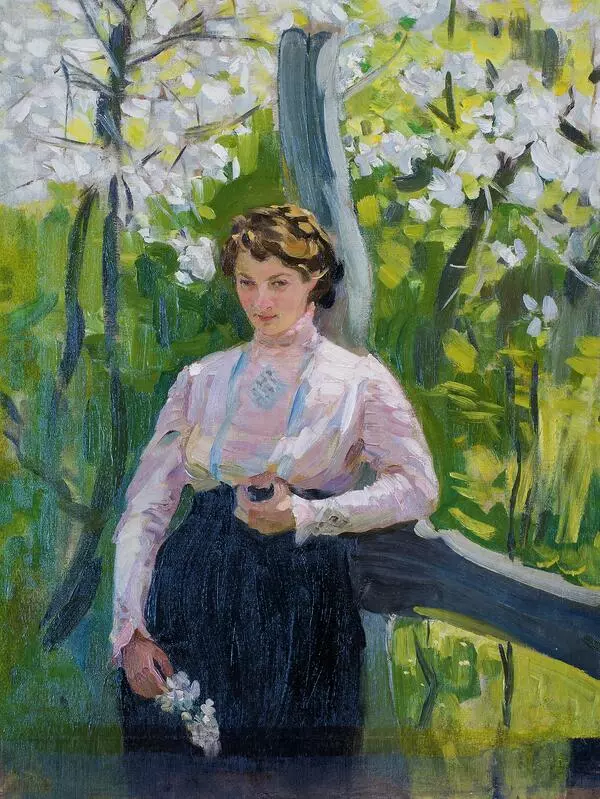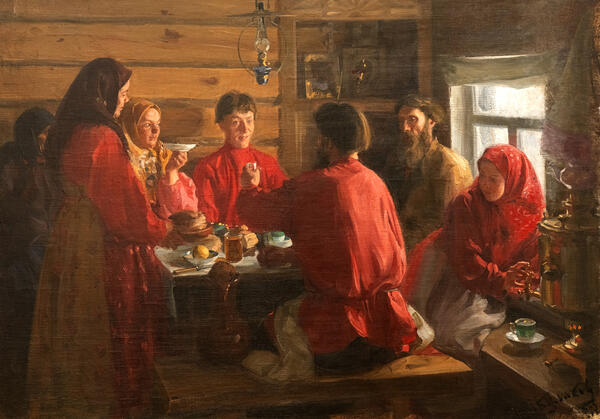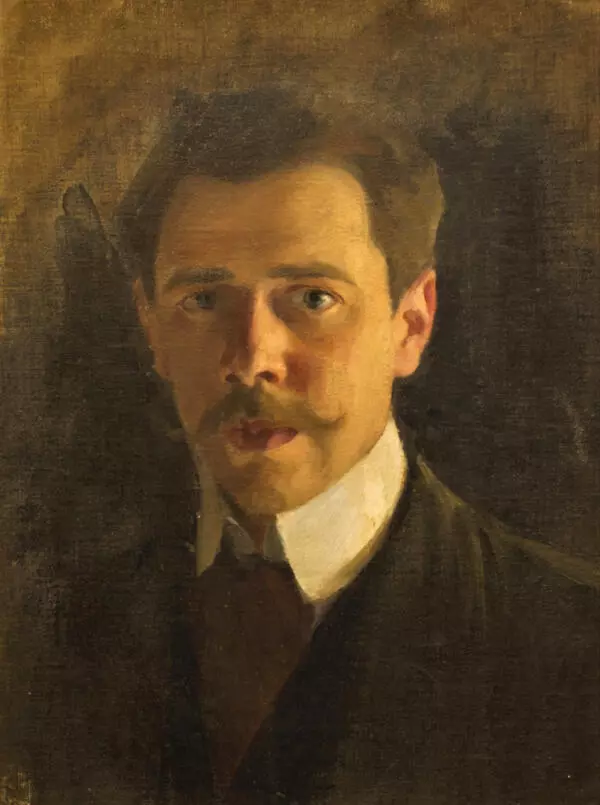In the early 20-th century, the culture and the everyday life of the Russian peasants changed irreversibly. The filigree works of decorative and applied art masters were replaced by manufactured products; manual labour in many spheres gave way to machine production. But though progress and enlightenment strongly overshadowed some of the national folk traditions and much had been forgotten, many artists, on the contrary, started showing a very lively interest in them.
Ivan Kulikov was one of those artists who often found inspiration in the everyday life and traditions of the Russian peasantry. In the painting The Ancient Ceremony of the Blessing of the Bride in the Town of Murom, the bride’s parents, in the presence of numerous relatives, are blessing their daughter for a new married life. Kulikov reproduced every detail of the peasant clothing, filled the room with everyday life items, and managed to convey the colours and textures of the peasant house interior.
Ivan Kulikov, just like the character in his painting, was born in the town of Murom to a peasant family. In his youth, he made acquaintance with Alexander Morozov, an artist, and inspired by his example, set off to St. Petersburg to study at an Art School there and later enter a higher educational institution at the Imperial Academy of Art.
Ivan Kulikov was one of those artists who often found inspiration in the everyday life and traditions of the Russian peasantry. In the painting The Ancient Ceremony of the Blessing of the Bride in the Town of Murom, the bride’s parents, in the presence of numerous relatives, are blessing their daughter for a new married life. Kulikov reproduced every detail of the peasant clothing, filled the room with everyday life items, and managed to convey the colours and textures of the peasant house interior.
Ivan Kulikov, just like the character in his painting, was born in the town of Murom to a peasant family. In his youth, he made acquaintance with Alexander Morozov, an artist, and inspired by his example, set off to St. Petersburg to study at an Art School there and later enter a higher educational institution at the Imperial Academy of Art.
